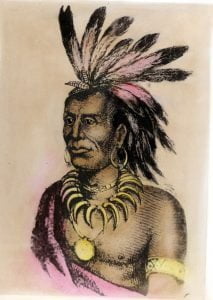Illinois Burial Customs
The term Illinois Indians as used by some early writers was intended to include the various Algonquian tribes, encountered in the “Illinois country,” in addition to those usually recognized as forming the Illinois confederacy. Thus, in the following quotation from Joutel will be found a reference to the Chahouanous – i. e., Shawnee – as being of the Islinois, and in the same note Accancea referred to the Quapaw, a Siouan tribe living on the right bank of the Mississippi, not far north of the mouth of the Arkansas. Describing the burial customs of the Illinois, as witnessed by him … Read more




